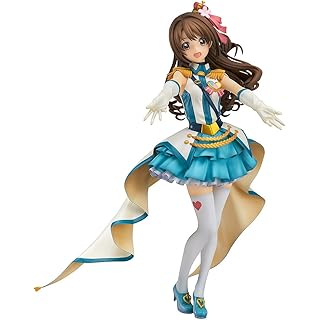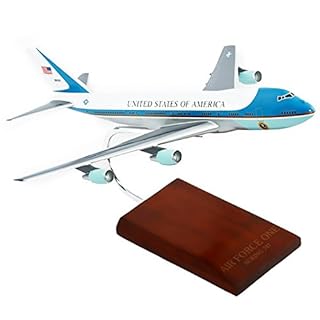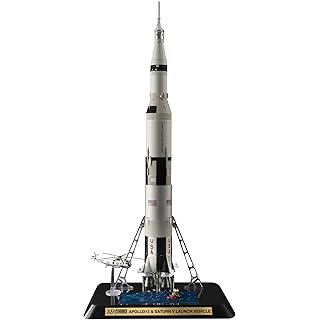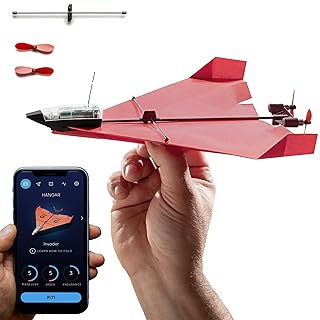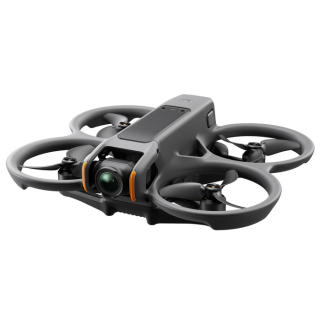How to use MSFS Addons Linker to organize your Community folders
Using free software called MSFS Addons Linker, you can freely change the location of the Community folder that stores add-on content for Microsoft Flight Simulator, and enable/disable add-on content with a single click. Here we will introduce how to use MSFS Addons Linker, a must-have for add-on content users.- What is MSFS Addons Linker?
- Organize your add-on content
- Download and install MSFS Addons Linker
- Initial setup of MSFS Addons Linker
- Enabling/Disabling Add-on Content
- Clean up invalid add-on content
- Where settings are stored/Replacing a computer
- Various folder operation functions
- Persistent feature: Specify add-on contents should always be active
- Presets feature: Save and restore enabled/disabled states
- Launch MSFS2024/2020 from MSFS Addons Linker
- Find add-on content on the map
- Check for airport overlaps by ICAO code
- Check for duplicate files in add-on content
What is MSFS Addons Linker?
This is a software developed by bad2000 that allows you to flexibly manage add-on content for Microsoft Flight Simulator. You can create a list of the add-on content you own and enable/disable it with one click. You can also store add-on content on any drive/folder without being tied to the location of the MSFS Community folder.The more add-on content you install in the Community folder, the longer it takes to start MSFS. By using this software to enable only the minimum amount of add-on content, you can reduce the startup time of MSFS.
This software creates a list of add-on content stored in a specified folder and creates symbolic links to it in the MSFS Community folder. By creating/deleting these symbolic links, this software instantly enables/disables add-on content without having to move/copy the add-on content files themselves. If you own both MSFS2024 and MSFS2020, you can consolidate both add-on content in one place, saving disk space.
This software is compatible with both MSFS2024 and MSFS2020.
Organize your add-on content
 The first thing you'll need to do to get started using this tool is organize the add-on content you own.
Move your add-on content from the Community folder in MSFS to a different drive/folder.
The important thing is to organize your folders as clearly as possible.
Having detailed folder organization will make it much easier to find and select your add-on content with this tool.
The first thing you'll need to do to get started using this tool is organize the add-on content you own.
Move your add-on content from the Community folder in MSFS to a different drive/folder.
The important thing is to organize your folders as clearly as possible.
Having detailed folder organization will make it much easier to find and select your add-on content with this tool.
I categorized them as shown in this figure. I created a folder called "addon_backup", and under that I created folders for each category, such as "Aircraft" and "Airport". Then, under each category folder, I created a folder for each country, for airports and scenery, and for liveries I created a folder for the corresponding aircraft. I then categorized the add-on content that I had saved in the Community folder into each folder under "addon_backup".
Note that you do not need to move all of your add-on content out of the Community folder. You can leave any add-on content you are sure you want enabled all the time in the Community folder.
Download and install MSFS Addons Linker
 MSFS Addons Linker is distributed on
flightsim.to
, where various add-on content for Microsoft Flight Simulator developed by users is published.
You can download it by opening the
MSFS Addons Linker 2020/2024 page
and clicking "Download now" at the bottom right of this screen.
MSFS Addons Linker is distributed on
flightsim.to
, where various add-on content for Microsoft Flight Simulator developed by users is published.
You can download it by opening the
MSFS Addons Linker 2020/2024 page
and clicking "Download now" at the bottom right of this screen.
You can also download the instruction manual (PDF) created by AdamskiNZ from the MSFS Addons Linker - General Procedures page .
For information on how to log in and use flightsim.to, please see How to use flightsim.to to add free add-ons (planes, airports, scenery) to MSFS .
 Once downloaded, you will get a compressed file with a name such as "MSFS_Addons_Linker_v26b_VfEpB.zip".
Unzip this into any folder.
Once downloaded, you will get a compressed file with a name such as "MSFS_Addons_Linker_v26b_VfEpB.zip".
Unzip this into any folder.
This will create a folder called "MSFS_Addons_Linker" as shown in the figure, and the contents of the compressed file will be extracted. "MSFS_Addons_Linker.exe" is the executable file for MSFS2020. "MSFS_Addons_Linker_2024.exe" is the executable file for MSFS2024. Double-click either one to start it.
Note that the latest version does not require the "Run this program as administrator" setting.
 We recommend placing a shortcut to the exe file on your desktop or elsewhere.
The top icon in the image on the right is for 2020, and the bottom icon is for 2024.
Use the different colors to distinguish between them.
We recommend placing a shortcut to the exe file on your desktop or elsewhere.
The top icon in the image on the right is for 2020, and the bottom icon is for 2024.
Use the different colors to distinguish between them.
The download and installation is now complete.
Initial setup of MSFS Addons Linker
 Double-click either "MSFS_Addons_Linker.exe" or "MSFS_Addons_Linker_2024.exe" to launch it.
When you launch it for the first time, the screen on the right will be displayed.
Click "More info".
Double-click either "MSFS_Addons_Linker.exe" or "MSFS_Addons_Linker_2024.exe" to launch it.
When you launch it for the first time, the screen on the right will be displayed.
Click "More info".
 Next, you will see a screen like this.
Click "Run".
Next, you will see a screen like this.
Click "Run".
 This will launch MSFS Addons Linker and open the options setting screen.
You will need to set at least the following two items.
This will launch MSFS Addons Linker and open the options setting screen.
You will need to set at least the following two items.
My Addons Folders
Specify the folder that contains the add-on content you downloaded. This is the folder where you initially categorized your add-on content. You can select the folder by clicking the
If you have saved your add-on content across multiple drives/folders, add them all.
MSFS Community folder
Specify the location of the MSFS Community folder. Click [...] on the right side of the screen to select a folder.
For the location of the Community folder, please refer to the "Community folder location" chapter on the How to use flightsim.to to add free add-ons (planes, airports, scenery) to MSFS page.
 This is how I set it up.
Once you've completed the settings, click the "OK" button at the bottom right of the screen.
This is how I set it up.
Once you've completed the settings, click the "OK" button at the bottom right of the screen.
 The folders containing add-on content will then be scanned and the MSFS Addons Linker main screen will open.
The left half of the screen will display a list of the add-on content you own.
The right half of the screen will display a list of the add-on content currently installed in the Community folder (or for which symbolic links have been generated).
The folders containing add-on content will then be scanned and the MSFS Addons Linker main screen will open.
The left half of the screen will display a list of the add-on content you own.
The right half of the screen will display a list of the add-on content currently installed in the Community folder (or for which symbolic links have been generated).
 When you save new add-on content or update add-on content while MSFS Addons Linker is running, click the
When you save new add-on content or update add-on content while MSFS Addons Linker is running, click the
Clicking the
Clicking the
Enabling/Disabling Add-on Content
 You can expand a folder by clicking the ">" mark next to the folder name on the left of the screen.
Then check the check box to the left of the add-on content name to enable that add-on content.
Checking a folder name will enable all of the add-on content contained in that folder.
You can expand a folder by clicking the ">" mark next to the folder name on the left of the screen.
Then check the check box to the left of the add-on content name to enable that add-on content.
Checking a folder name will enable all of the add-on content contained in that folder.
If you uncheck the folder name/add-on content name, the add-on content will be disabled.
Once you have finished setting the enable/disable, you can close MSFS Addons Linker. Next, start MSFS and verify that the add-on content is enabled/disabled as expected.
Even if you enable/disable add-on content, the change will not be reflected in real time in a running MSFS. After enabling/disabling it, please restart MSFS.
Managing Paid Add-on Content
AdamskiNZ's manual (PDF: below) explains how to use MSFS Addons Linker to manage paid add-on content (e.g. ORBX, PMDG) that is installed in the Community folder.
Clean up invalid add-on content
 If add-on content is deleted from the storage folder, or if the name of the add-on content is changed due to a version upgrade, invalid symbolic links may remain in the Community folder.
Such add-on content will be displayed in pink in the list on the right half of the screen.
If add-on content is deleted from the storage folder, or if the name of the add-on content is changed due to a version upgrade, invalid symbolic links may remain in the Community folder.
Such add-on content will be displayed in pink in the list on the right half of the screen.
 If you right-click on the name of an add-on content that is pink, a menu like this will appear.
If you select "Delete selected invalid link", only this invalid symbolic link will be deleted from the Community folder.
If you select "Delete all invalid links", all invalid symbolic links will be deleted from the Community folder.
If you right-click on the name of an add-on content that is pink, a menu like this will appear.
If you select "Delete selected invalid link", only this invalid symbolic link will be deleted from the Community folder.
If you select "Delete all invalid links", all invalid symbolic links will be deleted from the Community folder.
Where settings are stored/Replacing a computer
 Various setting information for MSFS Addons Linker is saved in
Various setting information for MSFS Addons Linker is saved in
C:\ProgramData\MSFS Addons Linker (MSFS2020)
C:\ProgramData\MSFS Addons Linker 2024 (MSFS2024)
. When you replace your computer, transfer the information from here.
The save destination for Presets (described below) can be specified or changed in the "Presets folder" field in the settings screen shown in the figure.
To open the settings screen, click the
Also, the presets save file ".preset" is compatible between MSFS2024 and 2020. You can copy and use it mutually. And it can be edited with a text editor.
Various folder operation functions
There are many convenient functions available for manipulating the enable/disable state of add-on content. You can temporarily save the current enable/disable status of all add-on content in a storage area called "Memory" and recall it from there.
This function is similar to the OS's "clipboard."
When you close MSFS Addons Linker, the contents of the "Memory" will be lost.
You can temporarily save the current enable/disable status of all add-on content in a storage area called "Memory" and recall it from there.
This function is similar to the OS's "clipboard."
When you close MSFS Addons Linker, the contents of the "Memory" will be lost.
Clicking the
 You can enable or disable all add-on content at once.
You can enable or disable all add-on content at once.
Clicking the
 Add-on content can be enabled or disabled on a per-folder basis.
Add-on content can be enabled or disabled on a per-folder basis.
Clicking the
 You can expand or collapse the entire folder tree at once.
You can expand or collapse the entire folder tree at once.
Clicking the
Clicking the
 You can expand or collapse the folder tree of the currently selected folder at once.
You can expand or collapse the folder tree of the currently selected folder at once.
In the part indicated by the arrow in this figure, clicking the
And clicking on the
 You can use the filter function to filter out currently active add-on content, currently inactive add-on content, and potentially duplicate add-on content.
You can use the filter function to filter out currently active add-on content, currently inactive add-on content, and potentially duplicate add-on content.
In the area indicated by the arrow in this figure, clicking the
Once you have set the filter, you can use the "Expand/collapse the entire folder tree" operation described above to list only the relevant add-on content.
And click the
Persistent feature: Specify add-on contents should always be active
You can set the "Persistent" flag for add-on content that you want to be always enabled, and then enable all add-on content with that flag in one go with a single touch. For example, even if you get confused by editing the enable/disable states of add-on content in a complicated way using Presets (described below) , you can enable the add-on content you need with one touch. On the add-on content list screen on the left of the screen, drag the scroll bar at the bottom left or right until the "Persistent" column appears.
Each time you click the circle here, you can turn the "Persistent" flag for that add-on content on/off.
On the add-on content list screen on the left of the screen, drag the scroll bar at the bottom left or right until the "Persistent" column appears.
Each time you click the circle here, you can turn the "Persistent" flag for that add-on content on/off.
 Clicking the
Clicking the
Clicking the
Presets feature: Save and restore enabled/disabled states
The Presets feature allows you to name and save the current enabled/disabled state and restore the enabled/disabled state from there. There are two ways to restore the enabled/disabled state: overwriting and restoring all enabled/disabled states, or restoring only the add-on content that you have enabled. If you create multiple Presets for different flying locations and situations, you can always enable the add-on content you need.For example, you can save your favorite aircrafts, scenerys around your departure point (country), and scenerys around your destination (country) as separate presets, and then select only the add-on content available for these presets, allowing you to quickly enable only the minimum amount of add-on content you need.
Save the current enabled/disabled state as a name
 Click the
Click the
 A dialog box like the one on the right will then be displayed.
Enter the name you want to give to the preset and click [OK].
A preset will then be created that saves the current enabled/disabled state.
A dialog box like the one on the right will then be displayed.
Enter the name you want to give to the preset and click [OK].
A preset will then be created that saves the current enabled/disabled state.
For example, by adding a sequential number such as "01_" or "02_" before the name, you can control the order in which they are displayed on the Presets selection screen (described below).
Creating a New Preset
You can prepare new empty Presets and freely specify the enabled/disabled states from scratch and save them.
 Click the
Click the
 You will then see a dialog box like this.
Enter the name you want to give to the Presets and click [OK].
You will then see a dialog box like this.
Enter the name you want to give to the Presets and click [OK].
For example, by adding a sequential number such as "01_" or "02_" before the name, you can control the order in which they are displayed on the Presets selection screen (described below).
 You'll then see a screen like this.
All add-on content is disabled, so select the add-on content you want to enable.
Once you've made your selections, click [OK] at the bottom right of the screen.
A Preset will then be generated, saving the specified enable/disable state.
You'll then see a screen like this.
All add-on content is disabled, so select the add-on content you want to enable.
Once you've made your selections, click [OK] at the bottom right of the screen.
A Preset will then be generated, saving the specified enable/disable state.
Restore enable/disable states from saved Presets
 Select the Presets you want to enable from the drop-down list at the bottom left of the screen.
Then select and click one of the buttons to the right of the drop-down list.
Select the Presets you want to enable from the drop-down list at the bottom left of the screen.
Then select and click one of the buttons to the right of the drop-down list.
Clicking [
Clicking [
Clicking [
If you click [
 Alternatively, click the
Alternatively, click the
 You will then see a screen like this.
It shows a list of the presets you have created.
You will then see a screen like this.
It shows a list of the presets you have created.
You can change the name of a preset by clicking [Rename] in the Command field. You can delete a preset by clicking [Delete]. You can edit a preset by clicking [Edit]. This will take you to the "Creating a New Preset" screen described above, where you can change the enabled/disabled status.
 From the list of presets, select the preset you want to enable.
Then select and click one of the buttons at the bottom of the screen.
From the list of presets, select the preset you want to enable.
Then select and click one of the buttons at the bottom of the screen.
Clicking [
Clicking [
Clicking [
If you check the "Automatically select..." checkbox at the bottom left of the screen, new add-on content contained in the folder you have specified as enabled will be automatically enabled when you save the presets.
 Click the [History] tab to view the operation history of the presets on this screen.
Click the [History] tab to view the operation history of the presets on this screen.
Launch MSFS2024/2020 from MSFS Addons Linker
 You can launch MSFS2024/2020 from MSFS Addons Linker.
To do this, you must specify the type of MSFS you own in the "Choose your FS version" field on the settings screen, once only.
You can specify the MS Store version, the Steam version, or any executable file.
If you select an option with "(fast launch)" attached, the splash screen will be skipped when launching MSFS.
You can launch MSFS2024/2020 from MSFS Addons Linker.
To do this, you must specify the type of MSFS you own in the "Choose your FS version" field on the settings screen, once only.
You can specify the MS Store version, the Steam version, or any executable file.
If you select an option with "(fast launch)" attached, the splash screen will be skipped when launching MSFS.
To open the settings screen, click the
 Once you've finished the settings, try starting up MSFS.
Click on the
Once you've finished the settings, try starting up MSFS.
Click on the
 A dialog box like the one on the right will appear. Clicking [Yes] will start MSFS.
A dialog box like the one on the right will appear. Clicking [Yes] will start MSFS.
 At the same time, a dialog box like this will appear.
Click [OK] to close the dialog box.
At the same time, a dialog box like this will appear.
Click [OK] to close the dialog box.
Find add-on content on the map
 You can search for location-based add-on content on a map.
You can search for location-based add-on content on a map.
To open this screen, click the
You can move, zoom in and out of the map with the mouse. Enabled add-on content is indicated with a
 You can configure various settings in the panel at the bottom right of the screen.
You can configure various settings in the panel at the bottom right of the screen.
In the Options section, you can select the map type and display the label (name) of the add-on content on the map. You can also display the flight plan.
If you turn on "Connection On" in the Simulator connection column, you can import information from the running MSFS into the map.
The "Move Altitude" field allows you to force a change in altitude for the aircraft you are piloting in MSFS.
Check the "Show aircraft" box to display the aircraft's current location and direction on the map.
Checking the "Follow aircraft" box will keep the map centered on the aircraft's current position.
View add-on content in list format
 You can view all add-on content in a list format (Grid view).
You can see detailed information such as capacity, date, and storage folder at a glance.
You can view all add-on content in a list format (Grid view).
You can see detailed information such as capacity, date, and storage folder at a glance.
To open this screen, click the
 You can see a list of aircraft liveries by selecting [Tools]-[Liveries browser] from the menu.
You can see a list of aircraft liveries by selecting [Tools]-[Liveries browser] from the menu.
 You can also view a list of thumbnails for the add-on content by clicking the
You can also view a list of thumbnails for the add-on content by clicking the
When a developer develops add-on content, the image set in the "Content Manager Thumnail" field in the Inspector screen by the MSFS SDK is displayed.
 If you click "Groups Filter" on the screen above, you will see a screen like this figure.
You can select the add-on content to display by folder.
If you click "Groups Filter" on the screen above, you will see a screen like this figure.
You can select the add-on content to display by folder.
Check for airport overlaps by ICAO code
You can check whether the airport add-on content is duplicated using ICAO code. MSFS official airports are also subject to the duplicate check. From the menu, select [Tools]-[Scan ICAO / Check for duplicates].
From the menu, select [Tools]-[Scan ICAO / Check for duplicates].
 You'll then see a screen like this.
Clicking the [Start check] button will scan the add-on content folder and list any duplicate airports.
You'll then see a screen like this.
Clicking the [Start check] button will scan the add-on content folder and list any duplicate airports.
Check for duplicate files in add-on content
You can check whether files with the same name exist in multiple add-on content folders. If the same 3D model, texture, etc. exists in multiple add-on contents, they will be listed. This is a function mainly intended for add-on content developers. Select [Tools]-[Check Addons] from the menu.
Select [Tools]-[Check Addons] from the menu.
 You will then see a screen like this.
Clicking the [Start addons check] button will scan the add-on content folder and list duplicate files.
You will then see a screen like this.
Clicking the [Start addons check] button will scan the add-on content folder and list duplicate files.
If there are duplicate files, the file name will be listed along with which add-on content the file exists in.













